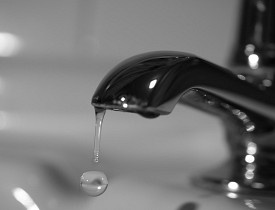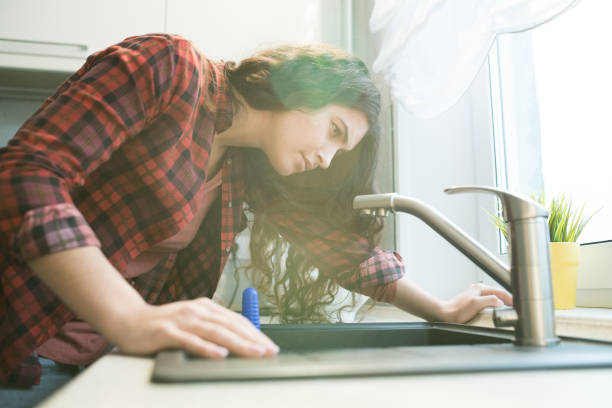Learning the Value of Resolving a Leaking Faucet
Learning the Value of Resolving a Leaking Faucet
Blog Article
What're your beliefs about 4 Common Reasons for a Leaky Faucet?

Dripping taps may appear like a minor inconvenience, yet their effect goes beyond simply the nuisance of the sound. From drainage to incurring unneeded monetary costs and health and wellness dangers, neglecting a dripping tap can lead to different effects. In this short article, we'll look into why it's crucial to resolve this usual household problem without delay and efficiently.
Wastefulness of Water
Environmental Effect
Trickling taps contribute considerably to water waste. According to the Epa (EPA), a solitary tap trickling at one drip per secondly can waste more than 3,000 gallons of water per year. This not only pressures water sources but likewise influences ecosystems and wild animals depending on them.
Step-by-Step Overview to Fixing a Dripping Faucet
Tools Required
Before attempting to take care of a dripping faucet, collect the necessary devices, including a flexible wrench, screwdrivers, substitute parts (such as washing machines or cartridges), and plumber's tape.
Typical Tap Issues and Their Solutions
Determine the sort of tap and the specific issue triggering the drip. Typical problems consist of damaged washers, corroded valve seats, or damaged O-rings. Describe manufacturer directions or online tutorials for step-by-step advice on fixings.
Financial Costs
Enhanced Water Expenses
Beyond the ecological influence, dripping taps can pump up water bills considerably. The collected wastage over time translates into greater energy expenditures, which might have been avoided with prompt repair services.
Potential Home Damage
Additionally, long term trickling can result in harm to fixtures and surfaces bordering the faucet. Water build-up can create staining, corrosion, and even architectural concerns if left unattended, leading to added fixing prices.
Wellness Concerns
Mold and Mildew Growth
The continuous existence of wetness from a trickling tap develops a perfect atmosphere for mold and mildew growth. These fungis not just compromise indoor air high quality but likewise position wellness risks, especially for people with respiratory system conditions or allergic reactions.
Waterborne Diseases
Stagnant water in dripping faucets can end up being a breeding place for germs and other virus, boosting the danger of waterborne diseases. Contaminants such as Legionella germs grow in stagnant water, potentially causing severe diseases when ingested or inhaled.
DIY vs. Expert Repair work
Pros and Cons of DIY Repair Service
While some might try to fix a leaking tap themselves, do it yourself fixings feature their very own collection of obstacles. Without proper knowledge and tools, DIY efforts can aggravate the problem or lead to insufficient repair work, prolonging the issue.
Benefits of Employing a Professional Plumber
Employing a professional plumber makes certain that the underlying reason for the trickling faucet is attended to effectively. Plumbing professionals possess the expertise and devices to identify and fix tap issues efficiently, saving time and lessening the threat of more damages.
Ecological Duty
Specific Contribution to Preservation
Taking obligation for dealing with trickling faucets aligns with broader initiatives toward water conservation and ecological sustainability. Every individual's actions jointly make a considerable impact on maintaining valuable sources.
Sustainable Living Practices
By prioritizing timely repairs and taking on water-saving practices, people contribute to lasting living practices that profit both existing and future generations.
Preventive Measures
Normal Upkeep Tips
To prevent leaking taps, perform routine upkeep such as cleaning aerators, checking for leakages, and changing worn-out parts immediately. In addition, consider setting up water-saving gadgets or updating to extra effective components.
Relevance of Prompt Services
Addressing dripping faucets as soon as they're discovered avoids further water wastage and potential damage, ultimately conserving both water and cash in the future.
Effect On Home Worth
Perception of Well-Maintained Building
Preserving a residential or commercial property in good condition, consisting of attending to maintenance concerns like trickling taps, boosts its regarded worth and desirability amongst potential purchasers or lessees.
Impact on Resale Worth
Qualities with properly maintained plumbing fixtures, consisting of faucets, command higher resale worths in the realty market. Addressing trickling taps can contribute to a positive impact during property evaluations and negotiations.
Final thought
Resolving a dripping tap exceeds plain benefit; it's a crucial step toward saving water, minimizing economic costs, and protecting health and wellness and building. Whether via do it yourself repairs or professional assistance, taking action to deal with trickling taps is a little yet impactful way to advertise liable stewardship of sources and contribute to a much healthier, a lot more sustainable future.
How to Fix a Dripping or Leaky Faucet
A leaking faucet is one of the most common problems that homeowners encounter, but it being commonplace doesn’t make it any less annoying. The constant drip drip drip of a leaking bathtub faucet, showerhead, or sink tap can disturb your home’s serenity. Left neglected, a dripping faucet can also result in higher water bills and discoloration or mold growth in your sink or plumbing fixtures.
Fortunately, you don’t have to be a trained plumber to know how to stop a dripping faucet. With some basic tools, replacement parts, and a little patience, leaky faucet repair is a breeze. In this article, we’ll explain what causes dripping faucets and how you can fix them.
What Causes a Leaking Faucet?
Kitchen and bathroom faucets come in all manner of designs, but most involve some combination of valves, O-rings, seals, and washers. The O-ring is usually the weakest link, but any one of these pieces can wear down over time. Heat, moisture, temperature fluctuations, minerals, mold, and movement can contribute to warping and corrosion, breaking the watertight seal. This just comes with the territory of being a homeowner. Everything is always subject to wear and tear, and some component parts of your appliances and fixtures need to be replaced on occasion. At least replacement O-rings are cheap!
More rarely, dripping faucets can be a symptom of excessively high water pressure. Were this the case in your home, you would probably notice that the leak is not isolated to one faucet. Water pressure issues are harder to resolve on your own. We recommend contacting a professional plumber if you suspect your water pressure is too high.
How to Fix a Dripping Faucet
Pipe wrench or monkey wrench Allen wrench set Screwdrivers Old towel or rag Shut off the water.
Before you do anything, you need to turn off the water to keep from drenching your kitchen or bathroom. You should find a valve under the sink and against the wall. Once you’ve turned this valve, try turning the faucet on to confirm that the water source has been cut off.
If you can’t locate your local valve for the faucet you’re working on, you can always shut off the water to the house at the main valve. Of course, this will prohibit anyone from using the sinks, showers, or toilets while you’re working on the faucet that’s giving you trouble.
Plug or block the drain.
You’ll be disassembling the faucet and removing some small bits of hardware. Plug the drain with a stopper or rag to avoid the possibility of a small screw falling into your P-trap.
Take apart the faucet assembly.
There are several varieties of kitchen and bathroom faucets, each with its own manner of assembly. For detailed instructions on how to disassemble your faucet, you can refer to the fixture’s manual or contact the manufacturer. If you know whether you have a ball, disc, cartridge, or compression faucet, you can find detailed schematics online.
In general, you need to begin by removing the faucet handles. You might notice a small screw that you’ll need to remove with a screwdriver or Allen wrench. If you don’t see any visible securing hardware, it’s likely hidden under a decorative cap that can be unscrewed or popped off with flathead screwdriver.
Remove each piece methodically, consulting a schematic when necessary. Take notes or arrange the pieces in such a way to make it easier to correctly reassemble the faucet later.
Remove the cartridge.
Once you’ve removed the handles and securing hardware, you should be able to remove the valve cartridge or stem. Some cartridges will slide right out. Other faucet models will require you to loosen a nut with a pipe wrench before you can remove the valve stem.
Examine the exposed hardware.
With the cartridge or stem removed, inspect the component parts. Check the rubber O-rings for wear and tear. Also examine the seat washer for corrosion or other damage. These pieces are usually the responsible parties for a dripping faucet, but it’s worth inspecting the other component parts while you have the faucet disassembled.
Find replacement parts.
Once you’ve identified which faucet component has failed, find an identical replacement. Your local hardware store should have O-rings, seat washers, and other standard components in stock. If you have a luxury or uncommon faucet, you may have to contact the manufacturer for a replacement part.
It’s a good idea to take your old parts with you to the hardware store so you can compare them with the store’s inventory and be sure you’re purchasing the correct replacement.
Reassemble the faucet.
With your new parts in hand, reconstruct the faucet and handles. Don’t be tempted to overtighten screws or nuts. You might think this could create a better seal, but it can instead damage or bend a delicate part of the assembly and create a new problem for you.
Turn on the water and test the faucet.
The only thing left to do is test your work. Unplug the sink, turn the water back on, and try the faucet. Congratulate yourself on a job well done!
https://www.libertyhomeguard.com/how-to-fix-a-dripping-or-leaky-faucet/

Hopefully you liked our article on How to Fix a Dripping or Leaky Faucet . Thank you for spending some time to read through our piece of content. Do you know somebody else who is in to the subject? Be sure promote it. I praise you for your time. Come back soon.
Report this page